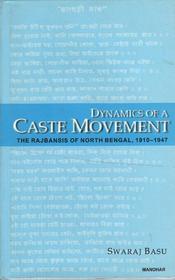
Dynamics of a Caste Movement – The Rajbansis of North Bengal, 1910–1947
The Rajbansis of North Bengal, 1910-1947
- Publisher's listprice GBP 47.00
-
22 454 Ft (21 385 Ft + 5% VAT)
The price is estimated because at the time of ordering we do not know what conversion rates will apply to HUF / product currency when the book arrives. In case HUF is weaker, the price increases slightly, in case HUF is stronger, the price goes lower slightly.
- Discount 10% (cc. 2 245 Ft off)
- Discounted price 20 209 Ft (19 247 Ft + 5% VAT)
Subcribe now and take benefit of a favourable price.
Subscribe
22 454 Ft

Availability
Estimated delivery time: In stock at the publisher, but not at Prospero's office. Delivery time approx. 3-5 weeks.
Not in stock at Prospero.
Why don't you give exact delivery time?
Delivery time is estimated on our previous experiences. We give estimations only, because we order from outside Hungary, and the delivery time mainly depends on how quickly the publisher supplies the book. Faster or slower deliveries both happen, but we do our best to supply as quickly as possible.
Product details:
- Publisher John Wiley & Sons
- Date of Publication 20 November 2024
- ISBN 9788173045097
- Binding Hardback
- No. of pages154 pages
- Size 230x150x15 mm
- Weight 550 g
- Language English 614
Categories
Long description:
Dynamics of a Caste Movement deals with the attempts of the Rajbansi community to establish themselves as Kshatriyas in the first half of the twentieth century in Bengal. Situating the Rajbansi caste movement in the context of contemporary socio-political events this book examines the complexities inherent in the movement.
The caste system, despite many changes over the years, remains significant in contemporary times. The colonisation of the country and the response of indigenous society to the manoeuvres of colonial rulers provided a new impetus to mobilisation along caste lines in the nineteenth and the early twentieth century Bengal as in the rest of India.
The Rajbansis constituted the most predominant section of the local Hindu population in the districts of north Bengal, and were yet placed quite low in the hierarchy. Using Rajbansi caste literature and government records, this study explores the formation of the Rajbansi identity, the socio-cultural and economic profile of the community, their efforts towards Kshatriyaization and the legitimisation of their social and political rights.
The author argues that there can be many identities within a caste group which play crucial roles on different occasions and at different times. As class identity often cuts across caste lines, so also territorial identities can lead to a fragmentation of a caste. In the context of recent political mobilization by the Rajbansis in north Bengal for a 'separate Kamtapur state' this book is essential reading for those wishing to understand the Rajbansis in their historical context.




